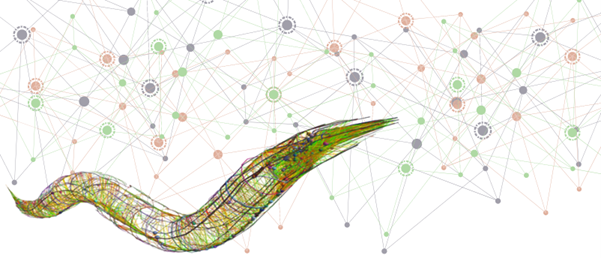How does the serotonergic system influence behavior?

A new study highlights how serotonin affects behavior in roundworms, mapping the serotonergic system within the model organism.
Researchers at The Picower Institute for Learning and Memory at the Massachusetts Institute of Technology (MIT; MA, USA) have mapped the entire serotonergic system of a model organism, Caenorhabditis elegans (C. elegans). By investigating serotonin’s role in the roundworms’ behavior, the team hopes to gain a greater understanding of how the neurotransmitter affects human behavior and how it can be targeted in psychiatric treatment.
Serotonin is one of the most commonly targeted brain chemicals by psychiatric drugs. In order to improve existing drugs and create new ones, more research is needed. This team at MIT, led by Steve Flavell, has delved into this area of research and mapped serotonin’s effects at a molecular and whole-brain level in C. elegans.
“There have been major challenges in rationally developing psychiatric drugs that target the serotonergic system,” commented Flavell. “The system is wildly complex. There are many different types of serotonergic neurons with widespread projections throughout the brain and serotonin acts through many different receptors, which are often activated in concert to change the way that neural circuits work.”
Although C. elegans are less complex than humans, with 302 neurons and only six serotonin receptors, the nature of the research means that these model organisms are still challenging subjects. Previously, researchers mapped the neurons and connections in C. elegans. This MIT team has also developed imaging technologies to track serotonergic activity throughout the C. elegans brain using a modified spinning-disk confocal microscope.
 Genetic defects involved in neuron death
Genetic defects involved in neuron death
A collaboration of researchers across institutions in Australia has found that some patients with motor neuron disease and frontotemporal dementia share genetic mutations.
In this study, the team comprehensively mapped serotonergic activity and investigated how serotonin influences behavior.
They first determined the functions of the worms’ six serotonin receptors by creating 64 varying mutant strains, each of which knocked out a different combination of serotonin receptors. Due to previous research led by Flavell in 2013, the researchers knew that C. elegans utilize serotonin to slow down when approaching food. The new study revealed that this slowing behavior was primarily driven by three of the six serotonin receptors, which were modulated by the other three receptors. Flavell commented that this interaction between serotonin receptors is likely to be relevant to psychiatric drugs that target them.
One method the researchers used to probe serotonin’s effects at a molecular level was by fluorescently tagging each serotonin receptor gene in each neuron in the brain. This revealed which neurons expressed which receptors, producing a brain-wide map of serotonin receptors.
They then let the worms freely explore their environments and monitored how the serotonergic neuron affected other cells’ activity. They found that around half of the neurons changed activity when serotonin was released.
“We performed brain-wide calcium imaging in freely moving animals with knowledge of cellular identity during serotonin release, providing, for the first time, a view of how serotonin release is associated with changes in activity across the defined cell types of an animal’s brain,” the research team concluded.
This study highlights the importance of understanding how serotonin receptors affect each other and behavior, providing important information for developing psychiatric drugs targeting serotonin.





